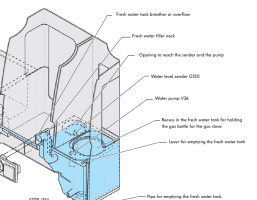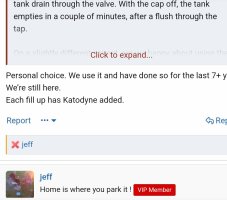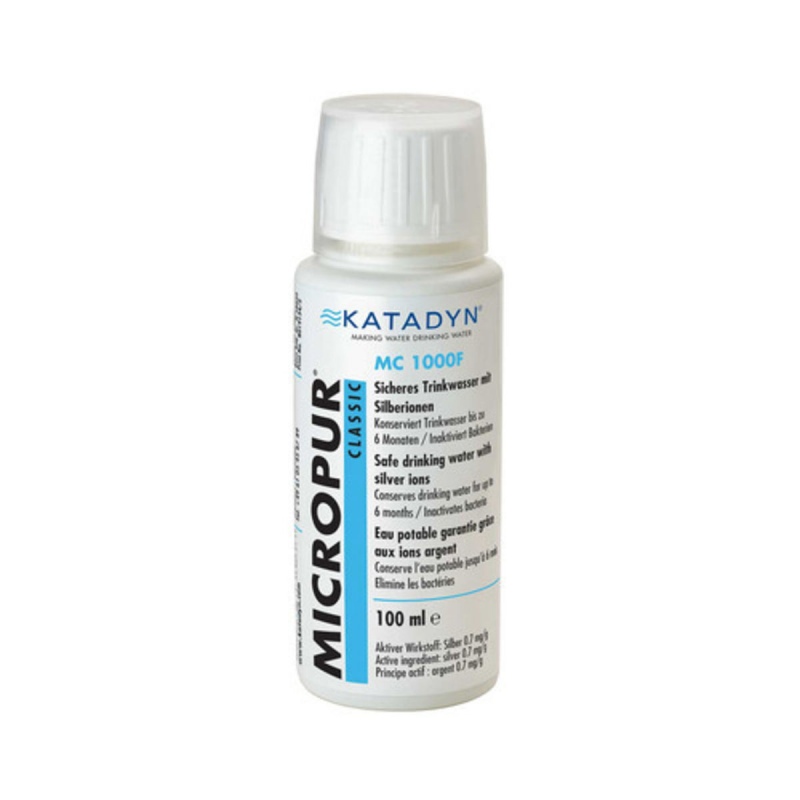Ok, I've had a read - not all of it, those guys really know how to write a report! The TLDR; is, no-one really knows how much silver is too much but the WHO give a guideline of 0.1mg/L (based on 70 years of consumption, this would be half of the estimated lifetime amount you can consume without any ill-effects!). German authorities quote 0.08mg/L and the USA 0.2mg/L. If I've worked out the dosing correctly, the Katadyn classic is 0.07mg/L and the Forte is 0.082mg/L, so they should both be fine for long term usage.
However, the report also states - "In drinking-water treatment applications, silver (ionic silver, experimental silver nanoparticle applications and silver-coated ceramic filters [ionic silver and silver nanoparticles]) has generally only shown to be effective against bacteria (i.e. 1.6 to 7.6 log10 reductions), most notably E. coli, with relatively long contact times. Based on the current available evidence, which is particularly limited for viruses and protozoa, silver does not appear to meet the WHO minimum performance recommendations for POU treatment products, which require effectiveness for two of the three pathogen classes"
And - "On the basis of the significant data and performance gaps in disinfection efficacy as a primary disinfectant of water, the limited data on the range of microorganisms against which it is effective and under what conditions, and the availability of widely used, well-characterized disinfectants, silver is not recommended for use as a primary disinfectant in drinking-water supplies at this time."
I'm no chemist, but reading between the lines, I think the silver prevents growth of bacteria but doesn't necessarily kill it - so it keeps your water clean in storage rather than actually cleaning it.
I note that the 'Forte' version of Katadyne has more conventional chlorine in it as well, which would do the cleaning, and the silver would keep it that way?
Full report here if anyone is struggling to sleep -
https://www.who.int/water_sanitation_health/publications/silver-02032018.pdf
Yes, I read it also, and (also as a non chemist) it says to me that ‘the jury’s out’ on the benefits, although I take the purpose of the report as being for municipal water treatment.
Personally, I have an aversion to consuming nano particles on a voluntary basis, so I think we will go down the route of a ‘good clean’ every few trips. I’m going to mirror the CIP (clean in place) routine used in food factories, breweries, etc. (used to be involved in design and build of these), but replacing industrial caustic / sterilant with Milton. I’ve tested a method that works for me, cleaning the fresh water tank, and the waste tank, but a warning - I don’t have any swab tests to prove sterility

1. Fill clean water tank, and flush through tap to waste tank (with water fill cap removed).
2. When waste tank is full, empty to drain, and drain the clean water tank.
3. Fill clean water tank again, at part full add 3 Milton tablets via the filling inlet. Milton instructions are 1 tablet per 5 litres water to make a full strength sterilising solution. I believe half strength will be good enough for this application, and less likely to leave any taint, or be too aggressive for any seals.
4. Flush through the tap and shower connection for a couple of minutes.
5. Allow 60 minutes contact time. Milton instructions are 15 minutes, so I think 60 minutes with a half strength solution will be good enough to get to any crevices without exposing any butyl seals too much. During this time, I took a short drive, many corners and roundabouts, to move water round a bit.
6. Empty clean water tank through sink tap into the waste tank filling it (outlet closed), and flush through shower connection.
7. When waste tank is full, allow waste tank to sit full for 30 minutes, and continue to empty the clean water tank via the drain.
8. Refill the clean water tank, flushing through tap (to waste tank) for a minute.
9. Drain clean water tank, and waste tank. Then close both drain valves.
10. Finally, refill the clean water tank, and do a sniff and taste test.
After doing this, there was no detectable taint.




















